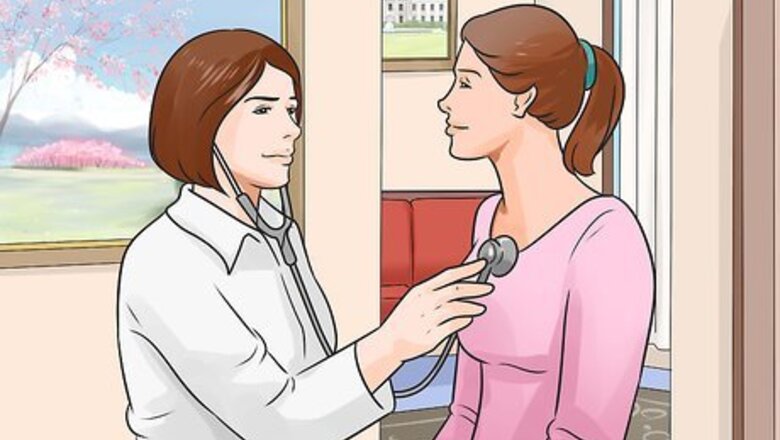
views
X
Trustworthy Source
Cleveland Clinic
Educational website from one of the world's leading hospitals
Go to source
Bacterial infections can be treated with antibiotics, but viruses are usually allowed to run their course. There are many possible explanations for muscle aches without fever, and treatment depends on the cause. In either case, there are steps you can take to minimize discomfort and speed up the healing process.
Getting Medical Attention for Muscle Aches with Fever

Visit your doctor. If you have signs of fever and body aches together, the first thing you should do is contact your doctor. She will be able to diagnose the cause and recommend a course of treatment. When muscle aches are accompanied by fever, the treatment is often something that requires professional intervention. Tick or insect bites can cause a variety of conditions, including Lyme disease, that must be treated by a doctor. A recent medication change may trigger flu-like symptoms. Never adjust your own medications without consulting your doctor. Metabolic disease often presents as lower extremity pain that increases with exercise. It must be treated by a doctor.
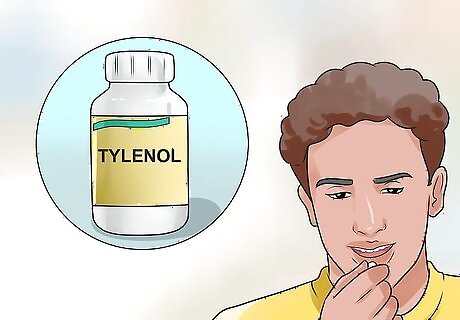
Take ibuprofen or acetaminophen (Tylenol). Both types of over-the-counter medicine help to reduce fever and reduce body aches. Ibuprofen prevents temperature increase and reduces the levels of "prostaglandin" hormones that cause the feeling of pain and cause inflammation. Acetaminophen reduces pain in the central nervous system and relieves fever, but does not reduce inflammation. Alternating between them may be more effective at reducing fever and body aches than choosing one or the other. Do not double the dose. Follow the directions on the packages. Alternating medicines can help prevent negative side effects from taking too much of one drug. Chronic use of NSAIDs (non-steroidal anti-inflammatory drugs) can lead to Gastrointestinal Bleeding including gastritis and ulcer disease. This is because NSAIDs destroy the protective lining in the stomach.

Do not give children aspirin. Though safe for adults, aspirin use in children may lead to Reye's syndrome — a serious disease of the brain and liver that is more common after a bout of the flu or the chicken pox. This condition can be potentially fatal. If you suspect your child has it, you should seek emergency medical attention. Symptoms occur shortly after the child takes the aspirin, and include: Lethargy Mental confusion Seizures Nausea and vomiting

Ask your doctor about antiviral medication for the flu. Viral infections are usually spread through close contact and careless hygiene. Though viral infections like the flu will run their course on their own, you may choose to ask your doctor for antiviral medication to shorten their duration. Symptoms include muscle soreness and generalized fatigue along with a temperature of 100°F or higher. Some patients can also have upper respiratory symptoms such as headache, runny nose, chills, sinus pain and sore throat. Getting an annual flu vaccine significantly reduces your chance of getting the flu. Your doctor may decide to prescribe oseltamivir if you have not had symptoms for greater than 48 hours. A common dosage for this medication is 75 mg twice daily within 48 hours of the onset of your symptoms.
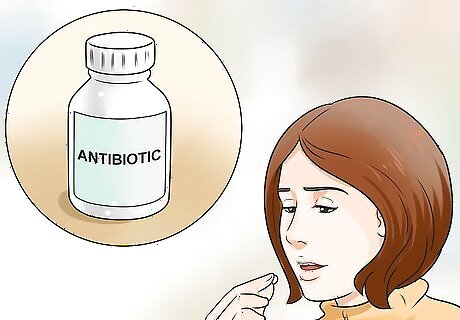
Take antibiotics to treat bacterial infection. If your doctor suspects that a bacterial infection is causing your symptoms, she will prescribe antibiotics. Antibiotics are not effective against viral infections. However, they can kill bacteria in the body and/or stop them from continuing to reproduce. This allows the body's natural defenses to fight off the remaining infection. The kind of antibiotic you take depends on the specific bacterial infection you have. The doctor will order a lab analysis of a blood sample to determine which bacteria is causing your symptoms.
Reducing Fever and Aches with Lifestyle Management
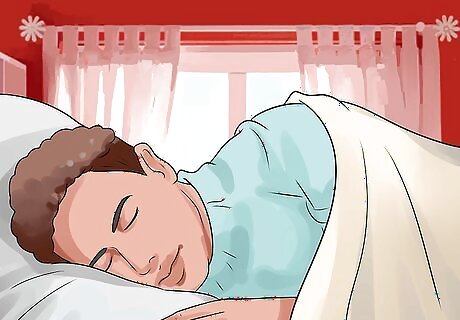
Rest and take it easy. Studies have shown that sleep deprivation can suppress immune function, and that rest can boost it. Your body will have to fight off the infection that is causing your fever and body aches. Even if you're taking medication to relieve symptoms, your body needs to rest and remain strong to fight the infection.
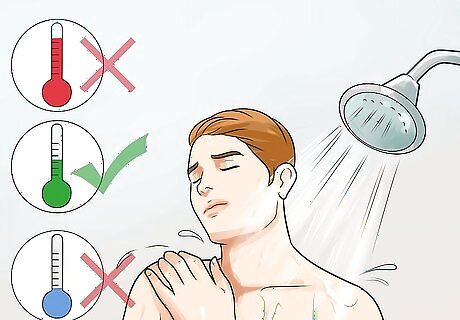
Use lukewarm water to decrease the fever. Try taking a bath in lukewarm water or putting cool towels on your body to cool your body down. Note that you should not do this if you are experiencing chills. Cooling your body will promote shivering, and this actually increases your body temperature. Do not take a bath in cool or cold water. This could drop your body temperature too fast. Take a bath in lukewarm water.
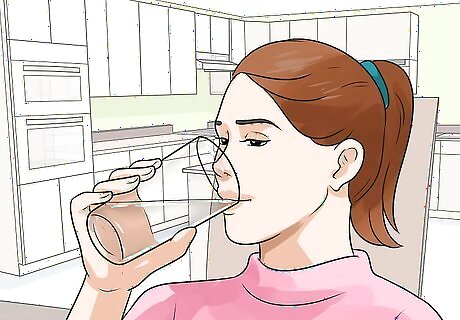
Hydrate your body well. When you have a high body temperature from fever, your body loses water more quickly. Dehydration can get even worse if fever is combined with vomiting or diarrhea. Make sure you drink plenty of fluids to stay hydrated. The body relies heavily on water to complete its basic functions, so staying hydrated will promote faster healing. Drink cool fluids to both hydrate and cool down your body. Sports drinks like Gatorade and Powerade are good drinks to consume if you are having gastric distress. These drinks can help to replenish electrolyte losses. Clear liquids such as broths or soups are also good to drink when you are having vomiting and diarrhea. Remember that you are losing fluid with these conditions, so you should try to replenish and hydrate yourself as much as possible. Drinking green tea will help boost your immune system. It may make diarrhea worse, so if you have diarrhea with fever and body ache, don't use green tea.

Eat foods high in antioxidants. Foods that contain antioxidants can help boost your immune system and make it easier for your body to fight the infection that is causing your symptoms. Foods to eat include: Blueberries, cherries, tomatoes, and other deep-colored fruits (yes, tomatoes are fruits!) Vegetables such as squash and bell peppers Avoid junk and highly processed foods, such as doughnuts, white bread, fries, and sweets.
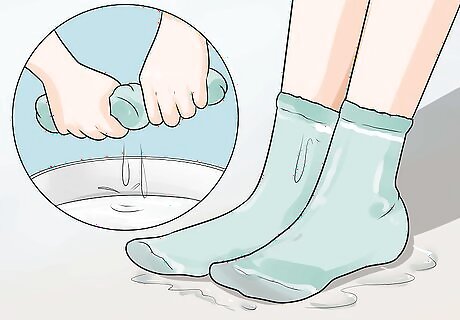
Wear wet socks. This technique will help reduce your body temperature. Wet a pair of thin cotton socks with lukewarm water and wring them out. Put them on your feet and cover them with a pair of thick socks. (This will help your feet stay warm.) Wear these when you go to bed. Your body will send blood and lymphatic fluid circulating in your body as you sleep and will stimulate your immune system. You can do this for 5-6 nights at a time. Then, take a break of 2 nights before continuing.
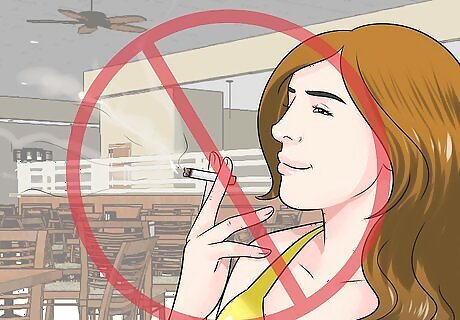
Stop smoking. Smoking makes the symptoms of viral infections such as cold and flu worse. It also hampers your immune system, which makes it harder for your body to recover.
Treating Muscle Aches Without Fever
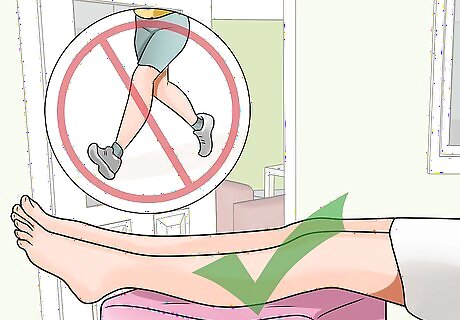
Rest overused muscles. The most common cause of muscle aches without fever is simple overexertion. You may have spent too long at the gym or pushed yourself too hard during your run. As a result, your muscles may feel sore due to lactic acid buildup in the muscles. The soreness will resolve on its own if you rest the affected muscles and allow them to heal. Just lay off the exercise until you feel better. To prevent this type of muscle ache, exercise regularly so your body isn't shocked by exertion. Gradually work your way up to serious activity instead of rushing into it. Always stretch properly before and after workouts. Increase your electrolyte consumption during the recovery period. Muscle soreness can be caused by a deficiency of electrolytes like potassium or calcium. Drink sports drinks like Gatorade or Powerade to replenish the electrolytes you lost through exercise.
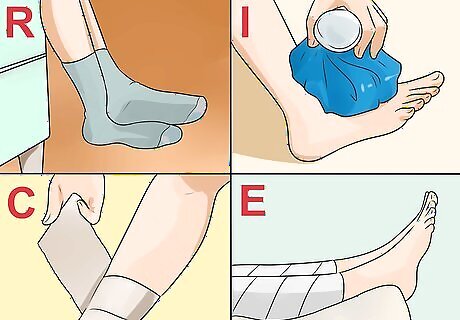
Treat local muscle injury or trauma with the RICE method. Broken bones and torn ligaments need emergency care, but muscle strain or pain can be treated on your own. This type of muscle ache is often the result of trauma from a sports or exercise injury. Symptoms usually include pain and/or swelling of the injured area. You may have trouble moving the limb freely until the injury heals. These injuries are treated with the RICE method: Rest, Ice, Compress, and Elevate. Rest the affected muscle as much as possible. Apply ice to the area to reduce swelling. The ice also numbs the nerve endings in the area, temporarily relieving pain. Apply ice packs for 15-20 minutes at a time. Compression both reduces swelling and helps stabilize the limb. This can be especially helpful if you injured your leg and are having trouble walking. Simply wrap the injured area snugly in an elastic bandage or trainer's tape. Elevating the affected area over your heart makes it harder to pump blood to it. This reduces swelling by relying on the force of gravity.
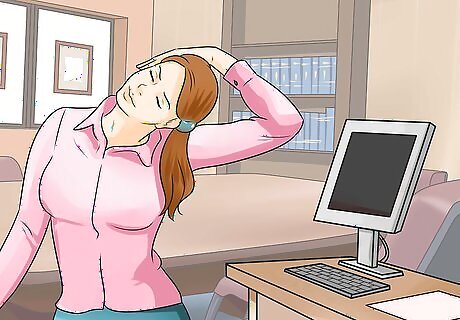
Take measures to prevent strain from office work. Though it seems strange, the sedentary lifestyle of office work can cause painful muscle aches. Sitting in one place for long periods of time can cause lower back pain, poor circulation to extremities, and increased abdominal girth. Starting a computer screen for hours a day can also result in headaches and eyestrain. To treat this type of muscle ache, take over the counter pain medications like Tylenol or aspirin. Break up your workday by stepping away from the desk from time to time and relieving the strain on your back and neck. Rest your eyes by taking a break every twenty minutes. Look at an object twenty feet away for twenty seconds. Regular exercise and increased water intake can also help.

Discuss your medications with your healthcare provider. The medication you're taking to treat a completely unrelated condition may cause body aches. This pain may begin after you start taking the drug or after dosage has been increased. Furthermore, some recreational drugs can cause a condition called Rhabdomyolysis. This is a serious condition that has been associated with statin use as well as crush injuries of the muscles. This condition requires immediate attention in the ER by a trained physician. See your doctor immediately if your muscle pain is combined with dark urine and you take one of the following medications or drugs: Antipsychotics Statins Amphetamines Cocaine Antidepressants such as SSRI Anticholinergic

Increase your electrolyte intake to treat electrolyte imbalance. "Electrolyte" is the name given to certain minerals in your body that carry an electric charge. Examples include potassium, calcium, and magnesium. These minerals affect hydration and muscle function, among other important body functions. A deficiency can result in tension and soreness in the muscles. You lose a lot of electrolytes when you sweat, but there are many products on the market that can replenish your balance, including dietary supplements. Sports drinks like Gatorade and Powerade are examples. Water, unfortunately, is not a natural source of electrolytes. If the pain does not diminish with home care, speak to your doctor about further possible treatment.

Follow professional medical instruction to treat a variety of muscle disorders. There are many types of muscle disorders that present as a chronic, general pain. If you have this type of pain and cannot pinpoint a cause, talk to your healthcare provider. Provide him with a detailed medical history, family history, list of medications, and symptoms. He will determine what tests to run to pinpoint the root of your generalized pain. Examples of muscle disorders might include: Dermatomyositis or polymyositis: these inflammatory muscle diseases affect women more than men. Symptoms include muscle loss or weakness with aches and difficulty swallowing. Treatment includes steroids and immunomodulators. Doctors will do blood work to determine if you have one of these conditions. There are specific autoantibodies involved in some of these disease. For example, with polymyositis doctors will look for antinuclear antibodies, Anti-Ro, and Anti-La Antibodies as a marker for diagnosis. Fibromyalgia: this condition may result from genetics, trauma, or anxiety or depression. It presents as a dull, constant pain felt throughout the body, often localized in the upper back and shoulder area. Other symptoms include headache, jaw pain, fatigue, and memory impairment or slow cognition. For the diagnosis of fibromyalgia you have to have 11 point tenderness, which is tenderness over certain characteristic soft tissue locations. Treatment includes stress management techniques, such as yoga and meditation, and may include pain medication. Sometime patients are also referred to a psychiatrist for treatment of depression and then subsequently started on an SSRI.
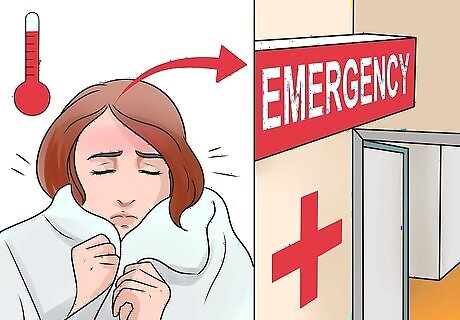
Seek emergency medical attention if necessary. You may be tempted to wait for muscle pain to resolve while resting at home. However, some symptoms need immediate medical attention. Seek emergency attention if you experience the following: Severe pain or pain that increases or does not resolve with medications Extreme muscle weakness or numbness High fever or chills Trouble breathing or dizziness Chest pain or vision changes Muscle pain with dark urine Decreased circulation or cold, pale or bluish extremity Any other symptoms you are unsure of Blood in the urine




















Comments
0 comment